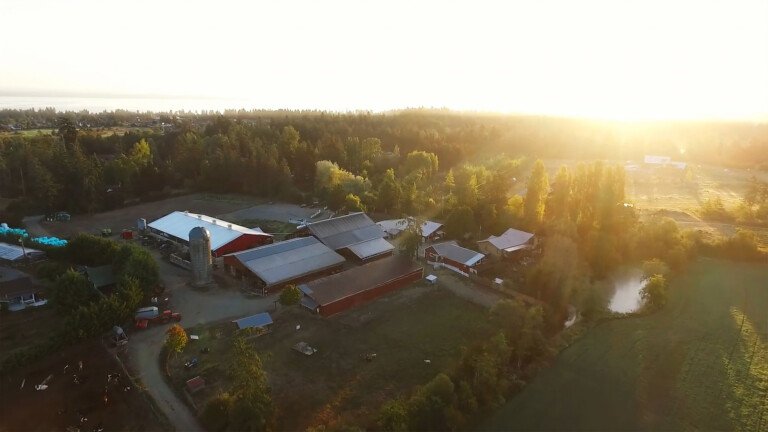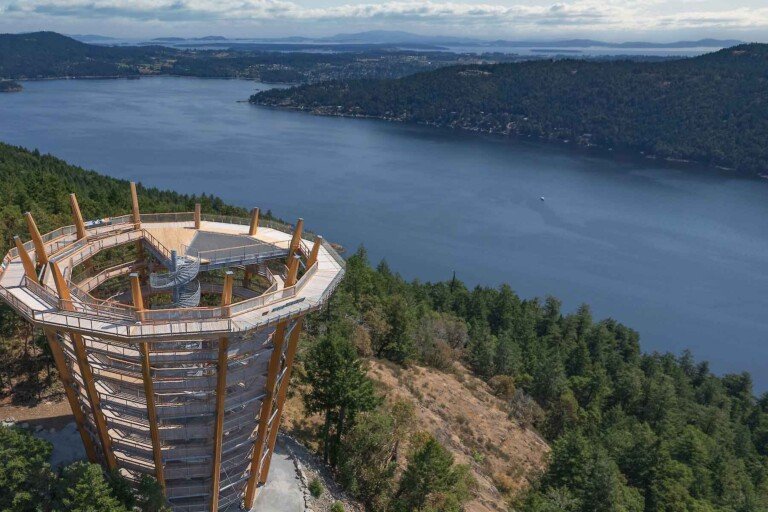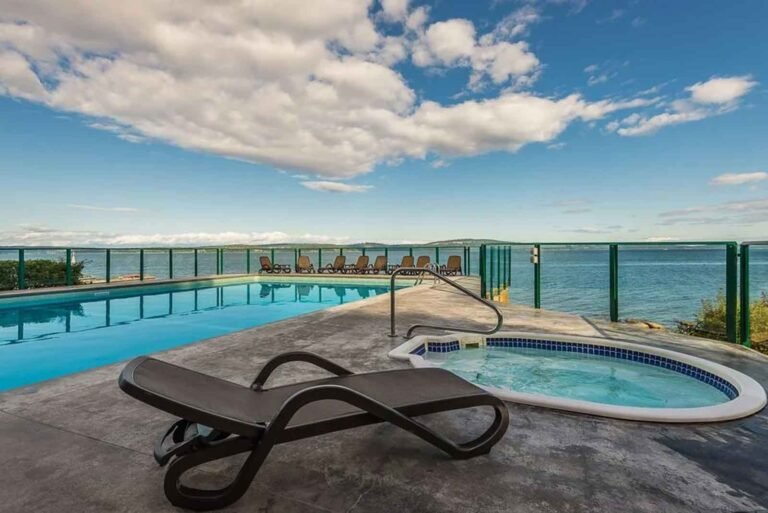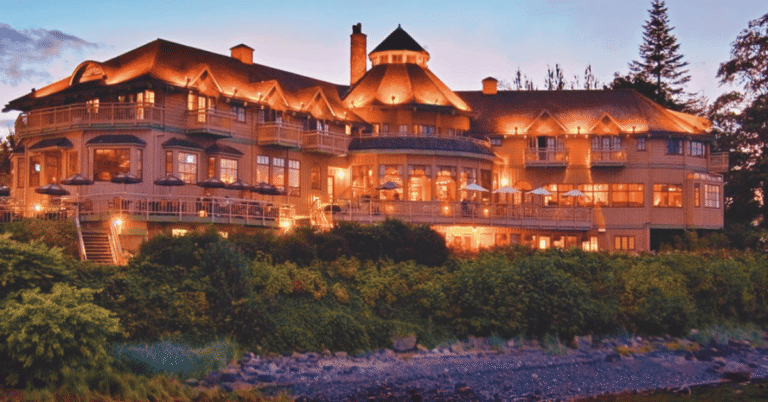Throughout its history, Wrangell has been influenced by a variety of cultural and economic activities. From its earliest period of occupation, perhaps as far back as 8,000 years ago, people have taken advantage of Wrangell’s unique setting. Petroglyphs found throughout Southeast Alaska, but concentrated in the Wrangell area, provide evidence for this early occupation.
Wrangell is the third oldest community in Alaska, the second oldest in Southeast Alaska, and the only community to be governed by 4 nations under 3 flags; the Tlingit Nation, Russia, Britain and American. Other cultures influencing Wrangell include the Chinese imported to work in the fish canneries, and the Japanese active in the timber industry.
Economic activities that shaped Wrangell as a community have been typically based on the substantial natural resources surrounding the community. Fur trading, mining, fishing and timber harvesting all placed Wrangell on the map as the centre of commerce in Southeast Alaska.
Wrangell was a major supply centre for three major gold rushes in the area. Beginning in 1861 with the Stikine Rush, Wrangell was a bustling boomtown replete with saloons, hotels, and warehouses. In 1898 Wrangell provided early access to the Klondike gold fields up the nearby Stikine River. Over time, population centres have shifted, but Wrangell residents continue to work hard, creating a new chapter in the town’s rich, colourful and unique legacy.
Population: 2,300
Location: The community of Wrangell is situated at the northern tip of Wrangell Island, near the mouth of the Stikine River and the remote northwest border of British Columbia. The closest community in BC is Telegraph Creek, located on the Stikine River.
The Wrangell Museum collection reflects Wrangell’s colourful past, including four of the finest carved Tlingit houseposts carved in the late 1700s and thought to be the oldest known houseposts still in existence today. The museum has an enviable collection of turn-of-the-century spruceroot and cedarbark baskets on display. Early settlement of Wrangell by the Russians and the English are represented in our collection on early exploration history. Chinese and Japanese collections depict later foreign influences in Wrangell.
The Museum’s photo collection of over 3,000 photographs and negatives documents the history of Wrangell, including the gold rush heyday, trapping, fishing, forestry, and the local community.
The Stikine River (Stik-Heen), meaning Great River in Tlingit, certainly lives up to its name, travelling 400 miles from its headwaters in British Columbia to its mouth at Wrangell, carving its channel through glacial valleys and delta flats. You can explore the river on a river boat charter that offers immediate access to glaciers, lakes, dunes and sloughs, or you can see the river by flightseeing over glaciers, through the coastal mountains and across high desert areas.
For a more leisurely trip on the Stikine River, canoes, kayaks, and rafts are available locally. Local operators can custom design trips or provide a combination of boat and flightseeing opportunities.
There are a variety of ways to enjoy the Stikine, and river boating is one of them. River Tour operators based in Telegraph Creek in neighbouring British Columbia arrange travel on the Stikine River in boats for an afternoon, a single overnight trip, or longer trips of several days to the Lower River and beyond to Wrangell, Alaska. These experienced guides operate under a special use permit from the USDA Forest Service; Tongass National Forest.
An outdoor shooting range is located on the Spur Road just past the Muskeg Meadows Golf Course. The range has two target shooting areas and a skeet shooting site for self-launched clay pigeons.
City Park is located approximately one mile south of town on Zimovia Highway. The park is a waterfront park on Zimovia Straits and has a scenic view of the inland waters and surrounding islands, adjacent to an historic cemetery. The park has a covered gazebo with a fireplace and picnic tables, and a covered barbeque. Tent camping is allowed on a 24-hour basis only, and there are restroom facilities available.
It is a short, but steep, scenic hike up the tree-covered hill to the top of Mt. Dewey, a great spot for picnicking and enjoying an eagle’s view of town, the waterfront and the surrounding area. Access to is along the Mt. Dewey Trail, easily accessible from the ferry terminal and the downtown area.
Five miles south of town is Shoemaker Bay Recreational Area, a year-round Wrangell favourite. The park has a picnic shelter with a fireplace and picnic tables, a tennis court, horseshoe pits, playground equipment, outdoor volleyball area and public restroom facilities. Sports equipment used for horseshoes, volleyball and croquet are available for use at no charge from the Parks and Recreation Department. The park area fronts the ocean and Institute Creek, offering easy access to the tidelands and stream frontage. Shoemaker Bay Park is located next to Shoemaker Bay Harbour, a tent camping area, and near the Shoemaker Bay RV Park. Rainbow Falls Trail is located upland from this area, providing hiking and spectacular sightseeing opportunities.
Chief Shakes Island in the middle of Wrangell Harbour is accessed by a pile-supported walkway. The island is on the National Register as an historic monument, open at all times for peaceful walks and viewing of the intricately carved totems surrounding the hand hewn Community House. The Community House is opened to the public at designated times scheduled each summer, or for prearranged groups. The title of Shakes, or We Shakes as it was initially known, was originally conferred upon Chief Gushklin of the Stikine Nan-yan-yi Tlingit settlement near present day Wrangell, after a war victory against the Nisga’a Indians of British Columbia. The Nisga’a Chief We-Shakes, rather than submit to the degradation of being a slave to the victorious Tlingit Chief, removed his killer whale hat and placed it on Gushklin’s head, giving him his own name We-Shakes. The name has since been shortened to Shakes, and the distinguished title has been handed down through the generations from Chief Shakes I to Chief Shakes VI.
Chief Shakes Tribal House on Chief Shakes Island was rehabilitated in 1939, and is a replica of the impressive architecture of a house of high caste among the Tlingit natives. The doorway shows a figure with many faces. Natives believed that each part of the body could act independently of another, so eyes were placed at joints to depict the power and spirit allowing independent action. Carved replicas of the Shakes Clan houseposts adorn the interior of the structure. The original houseposts, over 200 years old, can be viewed in the Museum.
Petroglyph Beach in Wrangell has the highest concentration of petroglyphs in Southeast Alaska and has recently been designated a State Historic Park. There is an accessible boardwalk to a deck overlooking Petroglyph Beach, the Stikine River and Zimovia Straits. Replicas of several designs are displayed on the deck for visitors to make rubbings on. Petroglyphs are designs or symbols pecked into rocks and found on boulders and bedrock outcrops on the shore just above or below mean high tide, usually near important salmon streams and habitation sites.
Rock art found in the Stikine River area is composed of basically simple elements, inspired by spiritual beliefs and the direct observation of nature. There are specific designs that occur throughout the area, some of which are found universally. The most common are animal figures common to the region. Others are circles, spirals, and faces. Some of the figures may represent historic clan crests, possibly inferring a specific claim to the territory where they were located. Petroglyphs may be a form of writing, a method of communication, or a way to record events. On the other hand, they may simply have no meaning beyond their artistic conception.
Muskeg Meadows Golf Course provides golf in true Alaska style. The fairways were carved from a rain forest and its natural beauty defies description. Its ocean views, snow-capped mountains, and wildlife are remarkable. It is truly a memorable experience to play golf surrounded by all this beauty. Anyone who plays the course will find it very challenging, with many unique hazards for the golfer, including the Raven Rule, which states that a ball stolen by a raven may be replaced, without penalty, provided there is a witness! The annual opening tournament of Muskeg Meadows is in April each year, coinciding with the Wrangell Garnet Festival, the local celebration of spring, and the migration of Bald Eagles congregating at the mouth of the Stikine River.
The Stikine River Delta, located only 5 miles north of Wrangell Island, is a haven for over 120 species of migrating birds in the spring and fall, including tundra (whistling) swans, Canada geese, sandhill cranes, mergansers, waterfowl and over 150,000 shorebirds. In April, the second largest congregation of eagles in the world gathers when as many as 1,600 arrive to feast on the annual run of hooligan on the Stikine. In late April, between 8,000 and 10,000 snow geese stop on their northbound migration. Other wildlife includes sealions, otter, bear and moose.
Anan Bear and Wildlife Observatory is an ancient Tlingit native fishing site. Accessible by boat or plane, the creek has the largest pink salmon run in Southeast Alaska, attracting significant numbers of black and brown bears to feast on the bounty. The U.S. Forest Service has developed an observatory providing a safe opportunity to watch the bears up close. A half-mile trail leads to an observation platform overlooking narrow falls where the salmon jump up river to be caught by bears.
Activities at Tent City Days include a Tall Tales Contest; Beard Growing Contest; Art Fair and Show; Tent City Players theatrical performances; Bed Races; Long-John Contest; Fashion Show; Model Car Races; Muskeg Meadows Golf Tournament, Turkey Shoots; community decorations; and an increasing variety of activities for children and adults alike. Saturday night peaks with a fancy dress ball and an after-the-dance breakfast.
Wrangell Garnet Festival, held annually during the third week in April, celebrates not only the arrival of spring in Southeast Alaska, but also the annual Eagle Migration on the Stikine River Delta. The annual eagle migration rivals that of Haines’ celebrated winter migration. The festival is named for the famous Garnet Ledge located at the mouth of the Stikine River, which belongs to the children of Wrangell. The festival includes a celebration of arts, a golf tournament at Muskeg Meadows, live music, street fair and informational speakers, and birding workshops.
The annual Wrangell King Salmon Fishing Derby in May/June is a challenge to fishermen everywhere to hook the King of Kings. During the spring run of King Salmon, locals and visitors fish from the crack of dawn to dusk trying to catch the big one.
Many travel guidebooks proclaim Wrangell as having the BEST July Fourth Celebration in the Inside Passage. Some of the activities include kids’ races, foot races, a scrapfish derby, basketball playoffs, soap box derby, big wheel races, tugboat races, a Coronation Ball and other new events that change annually. On the big day, the morning kicks off with a parade, a carnival and kids competitions, and then one of the most acclaimed traditional logging shows in Alaska. The evening heralds a live street dance and a fireworks extravaganza.
Eternal Reign Music and Arts Festivals celebrates Wrangell’s historic past with the strengths and talents of the present. The island’s rich history of arts, tradition and Christian heritage are shared in music, arts and crafts, workshops and drama. Wrangell’s hospitality, outdoor recreation and authentic small town characteristics create an ideal setting for this annual three-day family music event. Special kid’s and adult learning workshops are available from local residents who share their native roots in crafts, teachings and in song. The celebration draws to a close with the Fishes and Loaves seafood picnic and appreciation ceremony on Sunday.






